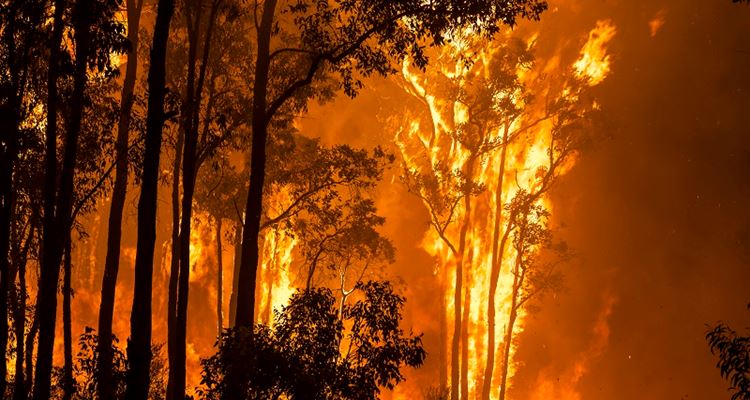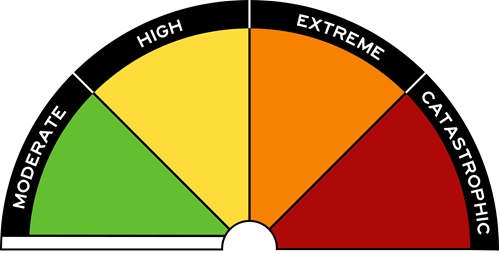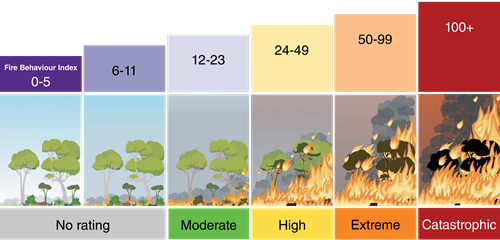New Fire Danger Ratings launching on 1 September 2022

The way that Australian fire agencies determine and communicate Fire Danger Ratings is changing.
The Australian Fire Danger Rating System (AFDRS) is being developed using the latest science to be more accurate and relevant to where you live.
The new system will be used across the country, so whether you’re at home or travelling, you will see the same system being used.
Community feedback informed the design to help make fire danger easier to understand and provide you with clearer advice about how to stay safe.
What you need to know
The AFDRS will have four levels (instead of six) – Moderate, High, Extreme and Catastrophic – bringing national consistency to the public display of ratings.
There will be actions for each level, so you know what to do to protect your life, family and property.
You will start seeing the new Fire Danger Ratings online and in your local community from 1 September 2022 through an extensive community engagement and education campaign.
Using the latest science and community input, the new system aims to provide more accurate and timely information about fire danger.
Why are we changing the current system?
The science underpinning the current Fire Danger Ratings is more than 60 years old. As science has improved, so has our ability to predict fire behaviour and threat more accurately.
In recent years, fire management personnel have mapped the vegetation across the entire country. So instead of the current system using just forest and grass to determine the fire danger, the new system will use eight different types of vegetation – making it more accurate.
Using the latest science, DFES and other fire agencies across the country will be able to better assess the conditions and the consequences of a fire, if one was to start.
The new Fire Danger Ratings

There are four levels of fire danger in the new system:
- Moderate: Plan and prepare.
- High: Be ready to act.
- Extreme: Take action now to protect your life and property.
- Catastrophic: For your survival, leave bushfire risk areas.
Fire Danger Ratings will be issued on days when there is a fire risk. Each rating will have a clear set of messages, including the actions the community can take to reduce their risk.
Improving the science means we can also switch off the new system on days where no proactive action is required by the community. This is represented by the white bar under ‘Moderate’ in the new Fire Danger Rating design (pictured above).
This isn’t to say that fires can’t or won't start at this level but that the community don’t need to actively anticipate a fire spreading in a fast or threatening way.
The Fire Danger Rating for an area will be determined using the new Fire Behaviour Index (FBI) as a key input.
The FBI is a scale of fire danger (0-100+) that uses the latest in fire science to produce outputs across the eight vegetation types. It will support decisions about fire preparedness, planned burning and bushfire suppression.

Certain agricultural and industry practices will continue to be regulated under the AFDRS but will be determined in relation to an FBI value.
Fire danger rating signs
The new Fire Danger Ratings will be used from 1 September 2022.
You will be able to check the daily fire danger for your area at Emergency WA or by visiting the Bureau of Meteorology website.
Local governments will also be updating their network of Fire Danger Rating roadside signs.
Find out more
About the Australian Fire Danger Rating System - DFES

